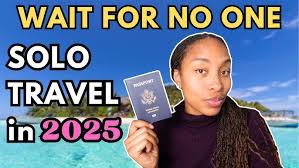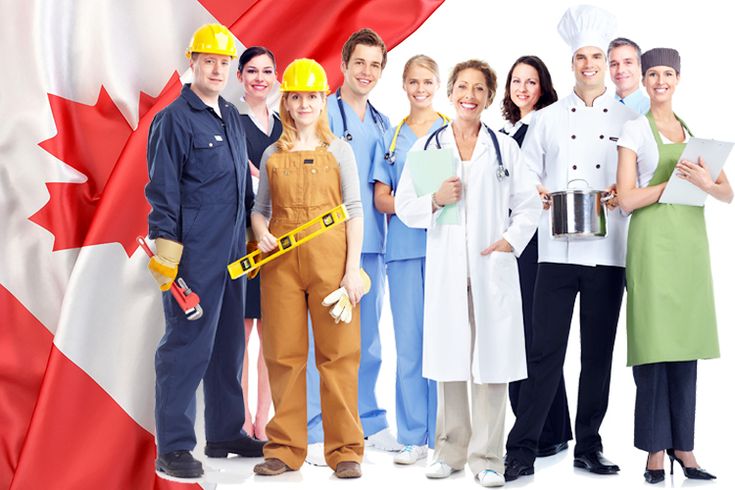Same-Sex Marriage Immigration: Visa Options and Global Recognition.
In today’s evolving world, the intersection of same-sex marriage and immigration policies represents a complex yet transformative domain. Societies around the globe have been progressively revising their legal frameworks to embrace equality while adapting immigration systems to accommodate diverse familial structures. This article delves into the multifaceted aspects of same-sex marriage immigration—from visa options and application processes to the global recognition of same-sex unions. Our exploration highlights key legal changes, detailed visa requirements, and the broader implications of international policies that now increasingly favor inclusivity and human rights.
In addressing the nuances of same-sex marriage immigration, it is imperative to examine not only the eligibility criteria but also the intricate legal pathways available. Prospective immigrants must consider the distinct types of visas tailored for marriage-based entries. For instance, when evaluating the appropriate route into the United States, many couples find themselves weighing the differences between various visa options. One particularly insightful resource is Fiancé(e) Visa vs. Spousal Visa: Which Path is Right for Your Journey to the USA?, which provides a comprehensive breakdown of critical factors to consider.
Results
#1. What type of part-time job would you like to do?
#2. How much would you like to earn per hour?
#3. Are you open to relocating for work or studies?
#4. What is your gender?
#5. Do you prefer working remotely or in an office setting?
#6. What type of scholarship are you looking for?
#7. Do you have a visa for your destination country?
Understanding Same-Sex Marriage Immigration
Same-sex marriage immigration is a dynamic area that has undergone significant transformation in recent years. Traditionally, immigration systems were primarily structured around heteronormative family units; however, with the legal recognition of same-sex marriages in many parts of the world, authorities have been compelled to update eligibility guidelines, documentation requirements, and even the interview processes.
Legal acknowledgment of same-sex unions has led to policy amendments that extend benefits similar to those offered to opposite-sex marriages. For example, immigrants entering on marriage visas must now provide similar levels of documentation and undergo comparable scrutiny in their applications. This balancing act between stringent immigration controls and progressive domestic policies is critical to ensuring that all families receive fair consideration.
One excellent guide for applicants in this space is Essential Documentation for Marriage-Based Visas Worldwide. This resource outlines the necessary documents and legal proof that bolster a strong visa case, making it easier for consular officers to assess applications objectively.
Visa Options for Same-Sex Couples
Navigating the myriad of visa options available to same-sex couples can be daunting, especially in a constantly evolving legal landscape. Many nations offer pathways through marriage-based visas, while others may extend special provisions under humanitarian or family reunification grounds. The primary visa options available typically include spousal visas, fiancé(e) visas, and partnership visas—each with its unique eligibility criteria, processing times, and documentation requirements.
Understanding the Different Visa Routes
Spousal Visas are usually designed for couples who have already formalized their marriage. In jurisdictions such as the United States and Canada, a spousal visa often provides a direct pathway to residency, contingent upon meeting specific income, health, and security requirements. The application process involves submitting a comprehensive portfolio of evidence that validates the marital relationship. This may include shared bank statements, joint property titles, photographs, and affidavits from family and friends who can attest to the bona fides of the union. Given the scrutiny inherent in these applications, many immigration officers meticulously verify every detail to mitigate risks of fraud.
In contrast, fiancé(e) visas are designed for couples who are engaged and planning to marry soon after arriving in the destination country. The primary advantage of the fiancé(e) visa is that it allows the applicant to enter the country and marry within a specified timeframe—often 90 days in the United States—after which a status adjustment is required. Although this type of visa can streamline entry for engaged couples, it comes with the caveat that failure to marry within the required period can jeopardize the applicant’s residency prospects. Every detail is examined, and applicants are encouraged to provide a clear timeline of their relationship milestones, comprehensive evidence of ongoing commitment, and proof of intent to marry imminently.
Partnership Visas are another option in regions where legally recognized civil unions or domestic partnerships extend similar immigration benefits as marriage does. Although not as widespread as the other two options, these visas are particularly relevant in countries that recognize a broader definition of family. For same-sex couples, partnership visas can sometimes offer an attractive alternative when traditional marriage is either not an option or when couples choose a legal framework that better suits their personal beliefs.
Factors to Consider
Each visa type comes with its set of priorities, security checks, and evidentiary requirements, all tailored to confirm the authenticity of the marital relationship. For example, in spousal visa applications, the emphasis is on demonstrating the longevity and stability of the relationship through documented history. Meanwhile, fiancé(e) visa applications might focus more on the impending union and the urgency with which the couple plans to formalize their relationship after entry.
Applicants should be prepared to address several common questions during the visa interview process. These questions may cover the origins of the relationship, future plans as a couple, and details regarding shared responsibilities, such as financial arrangements or living plans. Detailed record-keeping—ranging from correspondence to travel itineraries—serves as critical evidence during these interviews. Immigration authorities often look for consistency in the narrative provided by the couple, meaning that any discrepancies can potentially lead to delays or even denials.
Documentation and Interview Strategy
The documentation requirements vary significantly among the different visa options. For spousal visas, essential documents include marriage certificates, birth certificates, evidence of joint finances, and affidavits from people who are familiar with the couple’s relationship history. For fiancé(e) visas, in addition to the documents mentioned above, applicants may also need to provide proof of their engagement and a clear plan for their forthcoming marriage, such as a wedding invitation or a statement of intent.
An effective strategy for preparing the visa application is to organize a detailed timeline of significant events in the relationship. This timeline should ideally include information on how the couple met, key milestones in their relationship, and future plans that underscore their commitment to one another. By maintaining organized and comprehensive records, applicants not only fulfill the evidentiary requirements but also build a compelling case that stands up to the rigorous checks conducted by immigration officials.
Given the complexity of these applications, some couples opt to work with immigration lawyers or specialized visa consultants who are experienced in handling same-sex marriage immigration cases. These professionals can provide valuable guidance on preparing the necessary documentation, ensuring that all requirements are met, and maintaining consistency in the narrative. For those seeking further insight on how to safeguard their application process, a useful resource is Avoiding Marriage Fraud Accusations in Your Immigration Application, which offers critical perspectives on how to maintain a robust, fraud-free visa case.
Global Recognition and Legal Landscape
Despite progressive shifts in domestic policies across several regions, global recognition of same-sex marriages remains highly variable. Countries in Western Europe, North America, and parts of South America have embraced same-sex unions with full legal rights, including immigration benefits. Conversely, many nations in other regions still do not extend these privileges due to prevailing cultural, religious, or legal barriers.
The legal inconsistencies present significant challenges for same-sex couples seeking to relocate, as their marital status may be recognized in one jurisdiction but not in another. Such disparities not only affect visa eligibility but also have profound implications on access to healthcare, employment, and social benefits once relocated.
For individuals undergoing the immigration process, the need for a nuanced understanding of local and international laws is paramount. A resource that can be especially useful here is Conditional Residency Through Marriage: Steps to Remove Conditions Successfully., which details the procedural steps necessary for transitioning from temporary to permanent residency—an essential facet for those living under conditional statuses.
Pathways to Residency: Documentation and Process
Successful immigration based on same-sex marriage necessitates a meticulous approach to documentation. Applicants must compile a comprehensive dossier of evidence that substantiates the legitimacy of their relationship. This can include joint financial records, rental agreements, shared travel itineraries, and even affidavits from close family members or friends who can testify to the authenticity of the union.
Moreover, many countries require a scheduled interview as part of the residency application process. These interviews serve as opportunities for immigration officers to verify the consistency and veracity of the submitted documentation. The importance of thorough preparation for these interviews cannot be overstated, as any discrepancies might lead to delays or even rejections. To further bolster your application and understand the breadth of documentation necessary, refer to Bringing Dependent Children Through Marriage-Based Immigration. which not only covers documentation for the principal applicants but also addresses the complexities of integrating dependent family members into the process.
The residency pathway is a long and often arduous journey, but with the correct information and credible documentation, couples can confidently navigate the bureaucratic maze.
Table 1: Essential Non Job-Related Visa Resources
| Topic | Brief Description |
|---|---|
| Navigating the Marriage-Based Green Card Interview | A comprehensive guide outlining interview strategies and common questions. |
| Pathway from Student Visa to Permanent Residency After Graduation | An overview of the transition from student status to long-term residency. |
| Fiancé(e) Visa vs. Spousal Visa: Which Path is Right for Your Journey to the USA? | A detailed comparison of visa options for couples planning to wed. |
| Essential Documentation for Marriage-Based Visas Worldwide | A resource outlining the key documents required for visa applications. |
Challenges and Common Pitfalls
While the pathway to same-sex marriage immigration offers new avenues for family unification, it is not without its challenges. Applicants often encounter obstacles such as long processing times, stringent background checks, and a sometimes unpredictable legal environment. The risk of misunderstanding or misrepresenting essential documentation can also jeopardize an application, emphasizing the need for absolute transparency and rigor in the submission process.
One recurring challenge is the potential misinterpretation of financial documentation. Financial sponsorship requirements can prove particularly taxing, given that applicants must demonstrate not only sufficient personal income but also the ability to support their spouse. For practical guidance on overcoming these hurdles, readers should explore Common Pitfalls in Marriage Visa Applications and How to Steer Clear. which provides a detailed checklist to help applicants avoid frequent errors.
Additionally, applicants must remain vigilant regarding any changes in immigration law that could affect their application. This is especially true when environmental or political factors lead to sudden amendments in policy. The constant evolution of these regulations makes it essential for prospective immigrants to remain updated through reliable sources and expert advisories.
Table 2: Additional Non Job-Related Immigration Insights
| Topic | Brief Description |
|---|---|
| Community Colleges as a Gateway to University and Residency in North America | Explores pathways through community colleges that facilitate education and immigration transitions. |
| Meeting English Proficiency Requirements (IELTS/TOEFL) for Visas & Scholarships | Details the language tests and score benchmarks necessary for visa applications and scholarships. |
| Conditional Residency Through Marriage: Steps to Remove Conditions Successfully | Outlines the steps needed to transition from conditional to permanent residency. |
| Impact of Separation/Divorce on Your Marriage-Based Immigration Status | Discusses how changes in marital status may affect immigration applications. |
Navigating the Interview Process
A pivotal stage in the immigration journey is the interview process. This interview represents an opportunity for immigration officers to verify the authenticity of the applicant’s marital relationship and assess the overall credibility of the provided documentation. Applicants are typically questioned on various aspects of their relationship—from the origins of their union to future plans as a couple—making it imperative that they prepare thoroughly.
Preparation for the interview includes both mental rehearsal and a practical review of all submitted documents. Familiarizing oneself with potential questions and having clear, coherent answers can significantly enhance the likelihood of a favorable outcome. Furthermore, ensuring that all documentation is not only accurate but also readily accessible during the interview is a best practice that cannot be overlooked.
In light of these requirements, a valuable resource to assist in navigating these interviews is Financial Sponsorship Requirements for Spousal Visa. which clarifies the financial benchmarks and proof needed, thereby ensuring applicants are well-prepared for this critical juncture.
Table 3: Immigration-Related Job Opportunities
For individuals exploring career opportunities within the immigration sector, the following table identifies two prominent job roles along with their respective salary expectations. These roles are critical in assisting applicants navigate the complex landscape of immigration documentation and legal compliance.
| Job Title | Salary Expectation (USD) |
|---|---|
| Finding Part-Time Work Opportunities While on a Student Visa | $45,000 |
| Securing Visa Sponsorship for International Internships | $50,000 |
Future Directions in Same-Sex Marriage Immigration
As global societal norms continue to evolve, so too do the legal frameworks governing immigration for same-sex couples. Emerging trends indicate that many countries are progressively moving toward more inclusive immigration practices that recognize a broader spectrum of family compositions. This evolution is influenced not only by domestic political changes but also by international human rights standards and global economic considerations.
Recent advancements in technology are also playing a role in reshaping the landscape. For example, digital platforms are increasingly being used to streamline application processes, facilitate document submission, and even conduct remote interviews. These innovations promise to reduce processing times and minimize administrative errors, thereby improving the overall efficiency of the immigration system. In this context, understanding the potential future pathways can provide invaluable foresight for those planning to navigate the system in the years ahead.
For further insight into the complexities that may arise from personal circumstances, consider reflecting on Impact of Separation/Divorce on Your Marriage-Based Immigration Status. which offers a pertinent discussion on how changes in marital status can affect immigration outcomes.
Conclusion
In conclusion, same-sex marriage immigration is an intricate process that demands a careful balance between upholding strict immigration regulations and embracing the evolving standards of global human rights. Applicants must navigate a labyrinth of documentation, legal requirements, and interview protocols—all while contending with the disparate recognition of their union across international borders.
The journey toward achieving permanent residency through a same-sex marriage visa is paved with numerous challenges; however, with the proper resources and diligent preparation, it is possible to successfully build a foundation for a life in a new country. Aspiring immigrants are encouraged to leverage the available resources and stay informed about legal updates to mitigate risks throughout their application process. As policies continue to evolve and technology reshapes administrative procedures, the future appears increasingly hopeful for same-sex couples seeking to unite their lives under one global banner of equality and justice.
Ultimately, the path to immigration is not solely defined by paperwork and legal jargon but by the very human quest for dignity, respect, and the promise of a better life—one where love transcends boundaries and every couple is given the opportunity to thrive.
Final Remarks
Whether you are a prospective applicant or an interested observer, understanding the complexities of same-sex marriage immigration is crucial in today’s globalized and interconnected society. By staying up-to-date with the latest policy reforms, leveraging robust documentation practices, and seeking expert guidance when necessary, individuals can navigate this challenging terrain with greater confidence and clarity.
As the legal landscape continues to shift in favor of greater inclusivity, resources such as the ones highlighted in this article serve as essential tools in demystifying the immigration process. From comprehensive guides on documentation to practical advice on interview preparation, every facet of the journey is bolstered by a wealth of readily accessible information. Embrace the future with an informed approach and an unyielding commitment to equality—because the right to love and the right to belong are universal privileges that deserve unwavering protection.









